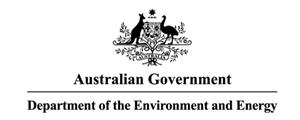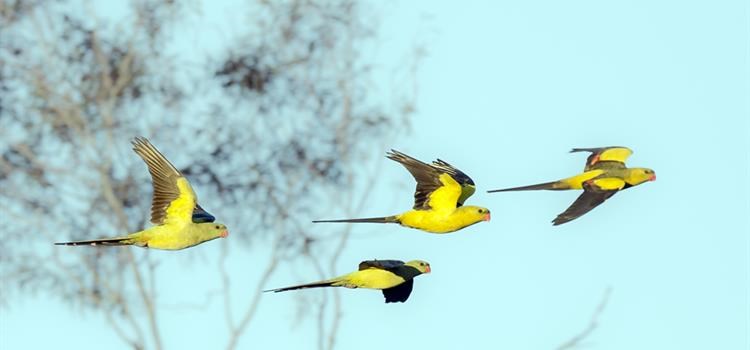
Project: 4.4.7
Threatened bird conservation in Murray-Darling Basin wetland and floodplain habitat
Project Leaders: Kat Selwood
Research in Brief
This project is designed to build a better understanding of how threatened bird species use the wetland and floodplain environments of the Murray–Darling Basin.
The project team will evaluate the importance of these habitats for threatened birds during periods of drought and high rainfall. It will identify priority wetland and floodplain habitats within the Murray-Darling Basin for threatened birds, including water-dependent, migratory and terrestrial birds.
This knowledge will be vital to ensuring that conservation management of the Murray–Darling Basin also improves the viability of threatened bird species. 
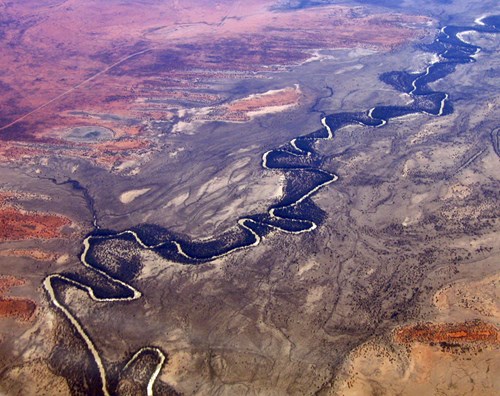 Aerial view of the Darling River. Photo: Tim J Keegan CC BY-SA 2.0 Wikimedia Commons
Aerial view of the Darling River. Photo: Tim J Keegan CC BY-SA 2.0 Wikimedia Commons
Why is the research needed?
Water extraction and regulation has substantially altered the freshwater and riparian ecosystems of Australia’s largest river system, the Murray–Darling Basin. The degradation of wetland and floodplain ecosystems has caused declines in many native plant and animal species. Many threatened birds, including waterbird and terrestrial birds, rely on wetland and floodplain habitats for parts of their life-cycles, and so the management of these systems has important ramifications for the viability of these species.
State and federal governments have made substantial policy progress towards improving the health of the Murray–Darling Basin system over recent decades. New conservation opportunities are also created by newly established national parks on the Murray–Darling Basin floodplains and the listing of 16 wetlands as Wetlands of International Importance under the Ramsar Convention. Statutory environmental water holders have been established to manage portfolios of water holdings for achieving environmental outcomes in floodplain, wetland and riverine environments, and numerous other environmental restoration activities are taking place throughout the Murray–Darling Basin.
These factors represent opportunities for improving outcomes for native species who use the wetland and floodplain habitats at various points in their life-cycle.
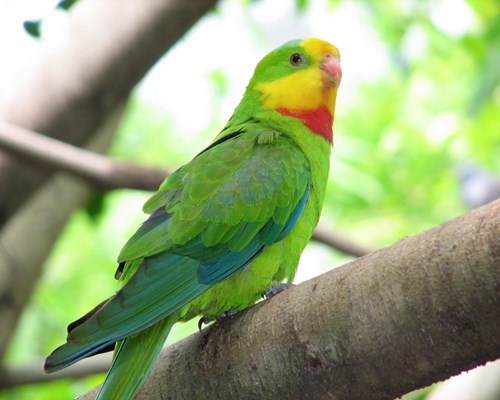 Superb parrot Photo: Paul Gear CC BY-SA 3.0 Wikimedia Commons
Superb parrot Photo: Paul Gear CC BY-SA 3.0 Wikimedia Commons
How will the research help?
This project aims to provide a better understanding of which locations in Murray–Darling Basin wetland and floodplain habitat are most important for threatened bird species. This will be valuable for taking advantage of the opportunities presented through environmental water management, Ramsar listing of wetlands, creation of new national parks on the Murray-Darling Basin floodplains, and the other environmental restoration activities in the region.
This improved knowledge is expected to improve the trajectory of at-risk species. Many water-dependent threatened species rely on the riverine and floodplain habitats of the Murray-Darling Basin for foraging and breeding. These habitats also support numerous threatened terrestrial species at different points in their life-cycles, and may provide
important drought refuges.
This project aims to identify priority wetlands and floodplain habitats in the Murray-Darling Basin, where conservation efforts could be concentrated for the benefit of both threatened native birds. It may inform the assessment of other wetlands for listing under Ramsar. It may also inform priorities for managing river red gum park systems in Victoria and New South Wales.
Finally, spatial identification of wetlands and floodplains important to threatened species will be valuable for informing environmental water use by the Commonwealth and Victorian environmental water holders in different scenarios of high and low rainfall.
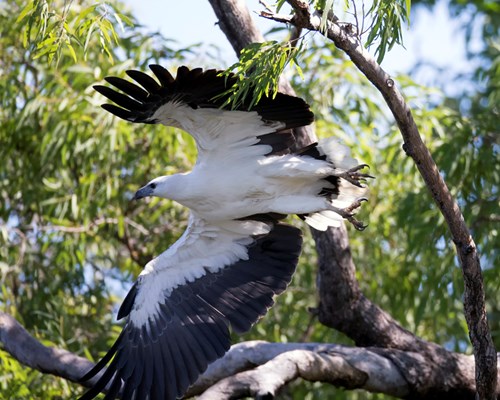 White bellied sea eagle. Photo: Jim Bendon CC BY-SA 2.0 Wikimedia Commons
White bellied sea eagle. Photo: Jim Bendon CC BY-SA 2.0 Wikimedia Commons
What research activities are being undertaken?
The project team will conduct spatial analysis of existing datasets to determine the threatened bird species commonly occurring in the Murray-Darling Basin floodplains and wetlands.
We will map the occurrence of threatened birds throughout the Murray-Darling Basin floodplains and wetlands (including Ramsar sites) during periods of both high and low water availability (i.e., drought).
We will draw on this information to assess the value of these environments for both water-dependent and terrestrial birds, the latter of which have not commonly been considered in the management of these ecosystems. Especially for terrestrial birds, the project aims to assess the value of floodplains and wetlands as drought refuges.
This will be determined through assessing changes in species distributions in the Murray-Darling Basin during drought and non-drought periods.
Finally, the project will employ quantitative spatial conservation planning to identify priority wetlands and floodplains.
Who is involved?
The project is being led by the University of Melbourne who are working with the Commonwealth Environmental Water Office, the Protected Species and Communities Branch of the Commonwealth Department of Environment and Energy, the Victorian Department of Environment, Water, Land and Planning and the New South Wales Office of Environment and Heritage.
Where is the research happening?
The research focuses on Murray-Darling Basin floodplain and wetland habitat.
When is the research happening?
The project will run for one year until October 2019.
Further information
For more information please contact project leader:
Katherine Selwood - katherine.selwood@unimelb.edu.au
or project team member:
Rowan Mott - rowan.mott@unimelb.edu.au
Top image: Eastern Regent Parrot. Photo: Glenn Ehmke




